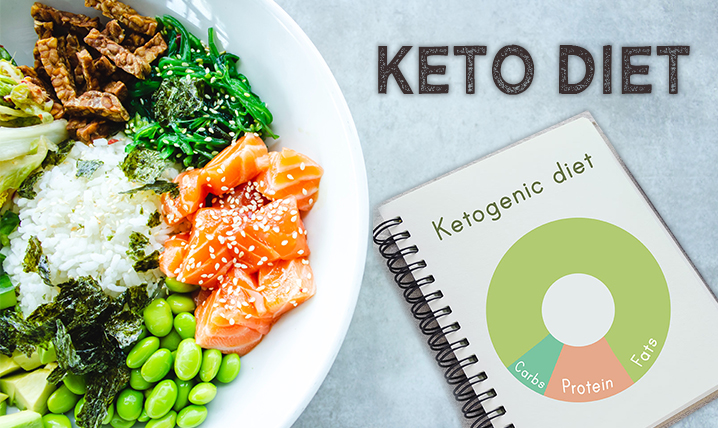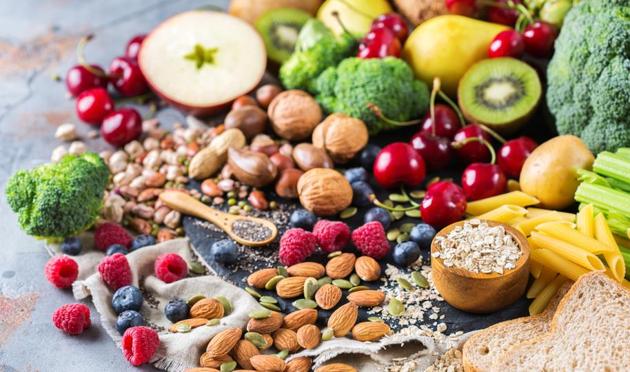Our Blog

How Keto Compares to other Diets

Over recent years, the ketogenic diet, also known as the keto diet, has gained massive popularity among the diverse age group of people. It is significantly being adopted by people who plan to lose weight and live a healthier life without sacrificing food that is high in fat. Keto is mainly known for its low carbohydrate and high-fat diet.
Why is a diet plan allowing you to consume mostly fat-reliant food?
When you consume most of your daily calories from fat, your system is forced to employ other energy sources. As a result, the body will burn fat for energy instead of carbohydrates, resulting in a phase known as ketosis.
How Does Keto Diet Help You?
Let us look at the nutrition, amount of weight loss, sustainability, and affordability of the Keto diet.
Nutrition
There are specific keto diet plans to fulfill the particular needs of the people. As the Keto diet is mostly fat-reliant, a minimum of 75% and a maximum of 90% of your calories will come from fat. The other sources of calories in a day will consist of a minimum of 5% and a maximum of 20% protein, and an average of 5% carbohydrate. A keto diet makes it challenging to meet your necessities for critical nutrients like fibers, minerals, and vitamins, which you might typically get from fruits and veggies.
Amount of weight loss
Although some researchers have indicated that a ketogenic diet leads to considerable weight loss, others have concluded that it is no better than standard or even other limited carbohydrate diets for long-term weight loss. Additionally, keto does not include calorie counting per meal intake. Hence there is a possibility of gaining weight in the long term instead of losing weight.
Sustainability
The basic meal plan of an Indian household consists of a substantial portion of carbohydrates such as rice or bread. The possibility of following keto for a long time is relatively less as the keto diet includes only 5% of carbohydrate intake in a day. Therefore, several people find it hard to maintain this lifestyle for a long time.
Affordability
The meal plan in a keto diet consists mainly of high-fat food. These include red meat, avocado oil, butter, and fatty fish. These meal plans are primarily expensive as the fat and proteins are substitutes for the carbohydrate.
Keto Diet Vs Atkins Diet
In terms of nutrition, the Atkins diet allows you a minimum of 5% and a maximum of 15% calories from carbohydrates which is more than any keto diet plan. Hence, the Atkins diet takes a more rational approach to nutrition. In addition, fruits, veggies, and whole grains are recommended during most stages of the diet pattern, so you will have adequate levels of fiber, key minerals, and vitamins. The Atkins diet is more probable to occur in long-term weight reduction compared to the keto diet. As it recommends suitable quantities for different foods and incorporates a program with activities to shed pounds and enhance health. Atkins’s low-carb lifestyle is simpler to stick to as it promotes a more comprehensive way of eating than the keto diet plan. Atkins diet is expected to be less costly and more affordable to pursue the curriculum depending on the books. The majority of the meals on the Atkins diet plan remain readily available throughout many supermarkets.
Keto Diet Vs Paleo Diet
The primary difference between a keto diet and a paleo diet is, beyond the cuisine, the paleo diet lays a strong priority on choices in lifestyle. To go along with the way of eating, it specifically supports a certain type of physical activity and meditation in everyday routines. In the paleo diet, you are allowed to consume quite enough proteins, fats, and carbs as you like as long as you stick to the “permitted” list of foods. Whereas the keto diet encourages eating healthful foods, macronutrient allocation is the primary priority. Keto limits carbohydrate consumption, but paleo permits a wide variety of whole-food carbohydrate options as long as those fall under the authorized categories of food. This makes the paleo diet more cost-effective and sustainable in comparison to the keto diet. The study has mentioned that the keto diet can lead to weight gain in the long run due to a lack of calorie counting. Conversely, the paleo diet contains a list of food by counting the calories in them.
Keto Diet Vs Vegan Diet
The keto diet includes the consumption of foods which has low carbohydrate and high fat. It focuses on high-fat foods like dairy products and avocados, as well as lean protein portions and few carbohydrates. A vegan diet focuses on eating only foods that are plant-based. A vegan diet removes all animal-based foods, although it is high in veggies, fruit, plant-based milk, tofu, whole grains, and legumes. Plant-based consumers often eat a wider range of nutrients, minerals, and other vitamins than the keto diet due to the food categories the vegan diet has. Vegan people also consume fewer calories on average than people who follow nonvegan diets like the keto diet. The vegan diet is more sustainable as it does not limit any food intake and focuses on substituting foods with plant-based foods. A vegan diet allows you to consume plant-based carbohydrates and fats which are known as healthier than animal-based carbs and fats. However, consuming plant-based foods is quite costly in comparison to the food categories in the keto diet. As some vegan diets do not contain the required amount of protein foods, vegan people often have to include protein supplements in their diet.
Final Takeaways
The choice of a particular diet is significantly dependent upon the time duration being considered. It can be comfortably concluded that the Atkins diet, Paleo diet, and Vegan diet are better for the long term, whereas in the case of a shorter period, the Keto diet can produce better results among the four. The only significant similarity between Atkins, Paleo, and Keto diets is that the goal of all these diets is the same. But the goal of the Vegan diet is mainly to change the lifestyle which eliminates animal-based products.







